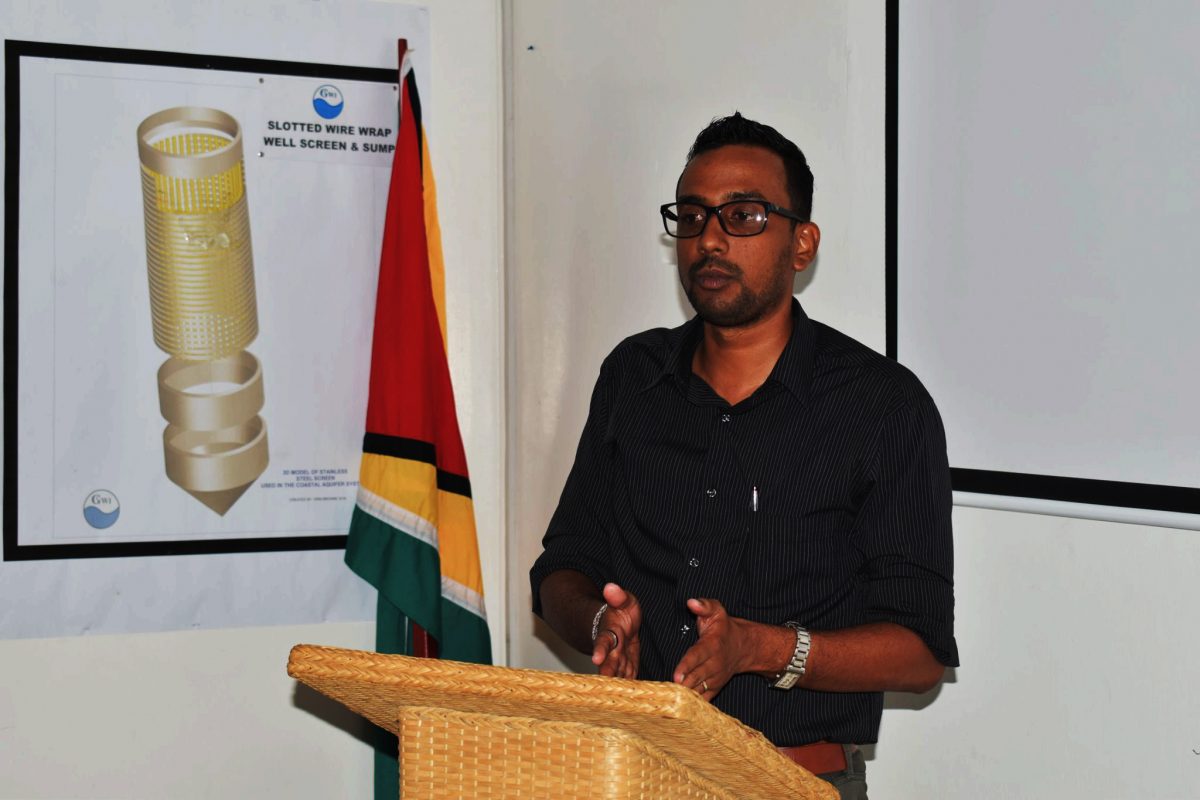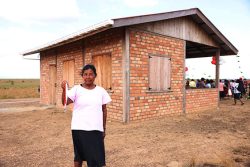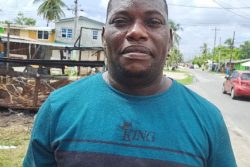While high iron content in the water being distributed by GWI is a problem that the entity has been trying to address for years, customer interference and poorly maintained storage tanks have been major contributing factors, says the Head of Water Quality Avinash Parsram.
At a press briefing yesterday, Chief Executive Officer of Guyana Water Inc (GWI) Shaik Baksh and Parsram addressed complaints that residents of Wakenaam and Tuschen in Region Three have been receiving poor quality water.
Baksh acknowledged that the high iron content in the water is a major problem across the coast land and noted that the level in each region varies.
“This has been something which has been occurring for a long time,” he said before adding that this was even acknowledged by President Irfaan Ali who promised billions of dollars in investment to improve the quality of water across the coastal belt.
After receiving complaints about the poor water quality in the two communities, Parsram said that a GWI investigation found that the high iron content is to be blamed. However, this did not originate from the GWI wells in the two areas.
When water in the Tuschen Well was tested 2.7 milligrams of iron per litre was found while its turbidity was at 2.2. At Wakenaam the level of at iron content was 6 milligrams per litre and its turbidity was 3.2 for the year of 2022.
“Results indicate that the turbidity and the colour of the water from these wells have met the World Health Organization’s guidelines. The only problem that has not met the guidelines is the iron content,” he stated.
However, he noted, apart from GWI taking samples from their wells, they also do so from residents on distribution networks.
He added that GWI has been pleading with customers for years not to interfere with water distribution networks because it has implications for water quality.
“Wherever iron is present, you will find iron bacteria that grow in storage tanks and internal walls of pipelines. It is seldom that these bacteria grow in the well itself. Now what happens is that customers that interfere can cause the iron bacteria to feed back into the system. These bacteria once decomposed and go through its life cycle brings about smells and odour – which is the characteristics of these bacteria. It is not the iron that is essentially an issue. It is the formation of the deposits from the bacteria that grows from poorly maintained storage tanks and so forth,” he said.
Nevertheless, in recognition of the high iron content in the water, Baksh said that GWI has embarked on a massive water programme for coastal water treatments that will see 13 new water treatment plants built – seven of which are already under construction while six are expected to be tendered for in February 2023.
Tuschen and Wakenaam will be beneficiaries of one water treatment plant when the programme is completed while the Essequibo Coast will have 100 percent coverage.
The entire programme costs $32 billion. To fill gaps between the plants, according to Baksh, GWI will also be installing smaller water systems across the coastal belt, while several will be expanded and upgraded. Specifically, GWI has begun testing a programme of using in-line filters to ensure that iron is removed from small water systems.
“Within two years, we expect that these plants will be in operation,” Baksh stated.








